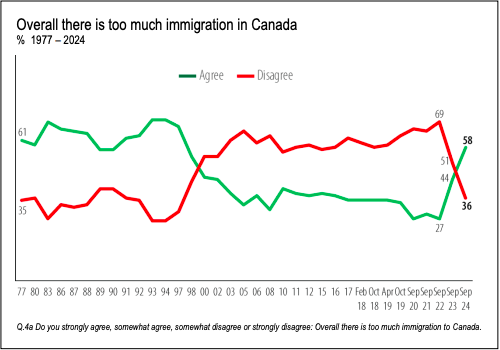While planned reductions to immigration levels in the coming years will narrow Canada’s housing gap, a new analysis by the federal Parliamentary Budget Officer concludes the cuts won’t make as big a difference as the Liberal government predicts.
In late October, Immigration Minister Marc Miller announced the federal government’s 2025-27 Immigration Levels Plan. Among other impacts, the plan is expected to cause declines in the total population of Canada across both 2025 and 2026. If that happens, it would mark the first population drop on an annual basis in Canadian history.
But a key intended goal of lowered immigration is to relieve current pressures on the Canadian housing market. The government has projected that the immigration decrease would narrow the housing gap by a total of 670,000 units by 2027. The PBO report puts that narrowing of the gap at only 540,000 units by 2030.
This projection is based largely on two factors: A decline in household formation due to the ILP-mandated immigration decrease, and future increase in housing-unit construction as a result of the announcement of Canada’s Housing Plan.
The PBO’s analysis of the reduced immigration plan calculates that completely eliminating the housing gap would require construction of an additional 110,000 housing units (on top of already planned developments) each year between 2025 and 2030.
“We make different assumptions about how the population shock will translate in the demand for housing,” said Caroline Nicol, one of the lead analysts on PBO’s report. “Young people, they’re more likely to be in bigger households with either their parents or with roommates,” she said. “If you have different assumptions about the age of the population shock, it changes your household formation.”
The PBO also judges significant risk in the government’s projected outflow of non-permanent residents. The government’s immigration plan assumes 2.8 million temporary residents (93 per cent of the current non-permanent resident population) will leave the country over the next three years. As a result, the PBO finds that even its own more conservative figures are “uncertain and likely represent upper-bound estimates.”
The 2025-27 Immigration Levels Plan calls for reductions to both permanent and temporary resident volumes over each of the next two years, with a stated target for 2027 of 365,000 permanent residents, and a temporary resident count that does not exceed five per cent of the country’s total population.
The resulting two-year period of population decline would represent a stark change from current trends. According to Statistics Canada, the country’s population ballooned from 38 million in July 2020 to 41 million in July 2024. In 2023, immigration accounted for 98 per cent of Canada’s overall population growth.
In recent years, immigration has become a controversial political issue in Canada. While the government–issued news release on the planned immigration levels highlights immigration as “essential to (Canada’s) economic success and growth,” a 2024 Environics Institute study on Canadian public opinion about immigration and refugees shows that support for the levels of newcomers to the country amongst Canadians has sharply decreased.

For the first time since the turn of the century, the percentage of respondents who agreed with the sentiment that there is too much immigration in Canada has surpassed the percentage of respondents who disagree with the same statement.
For those who cite the effects of immigration on the housing market as reason for their negative view of high immigration levels, the government’s plan to lower immigration levels likely represents a step towards addressing the housing shortage — but not as effective a solution as the government projects, according to the PBO.
“Some of the difference between the two numbers is methodological,” said Nicol. But overall, she said of the PBO’s calculations, “we estimate a smaller impact.”




